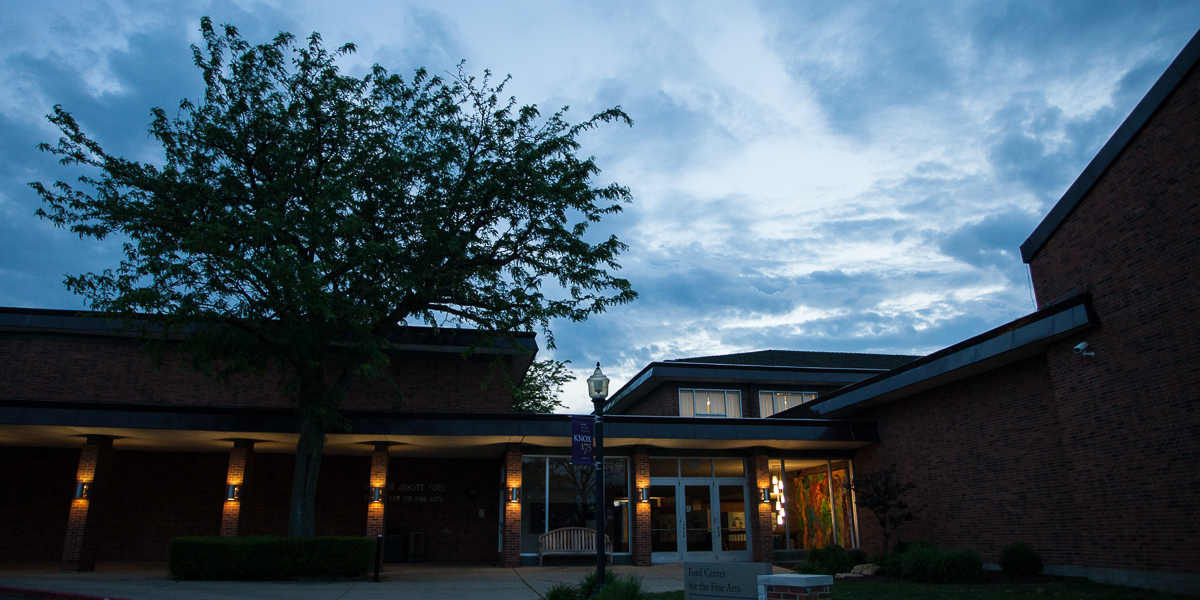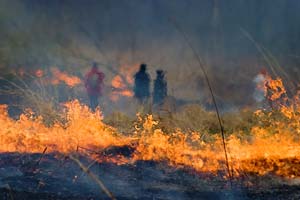

Venture Boldly

Office of Communications
2 East South Street
Galesburg, IL 61401

 The grass dancers bend, combing the tall grass and trailing their strokes with a flame. The group moves slowly around the tall prairie grass armed with kerosene drip torches. They ignite the grass along the gravel path at Knox College's Green Oaks Field Station. Outside the smoldering circle, a group of students outfitted with rakes, water drenched burlap mops and buckets of water or fire snuffer tools ready the line. Onlookers mull about, stepping around small ponds that hide intricate weed growth beneath.
The grass dancers bend, combing the tall grass and trailing their strokes with a flame. The group moves slowly around the tall prairie grass armed with kerosene drip torches. They ignite the grass along the gravel path at Knox College's Green Oaks Field Station. Outside the smoldering circle, a group of students outfitted with rakes, water drenched burlap mops and buckets of water or fire snuffer tools ready the line. Onlookers mull about, stepping around small ponds that hide intricate weed growth beneath.
It is the unique tradition that has become one of Knox's most recognizable events. Green Oaks is 700 acres of forest and 40 acres of restored prairie south of Victoria. It is the second-oldest restored tall-grass prairie in North America.
The spring prairie grass burn actually lights the fire on prairie grass restoration. Stuart Allison, associate professor of biology and Green Oaks Field Station director is the lead pyrotechnician at the annual burn. "The prairie grass is burned in order to revitalize the indigenous prairie grasses," Allison says.
According to Allison the burning process is a continuous natural process that dates back to the Native Americans. The burn keeps the prairie healthy, allowing it to not only survive, but grow faster. "It removes vegetation that could invade the prairie grass as well as the dead thatch underneath. It actually provides essential nutrients for ecology," he says.
Since 1956 Knox students, faculty and staff have trekked to the prairie for the annual burn. "From the beginning with Paul Sheppard and George Ward running the program, students have been involved with the tradition," Allison said. Each year the tradition continues and each burn has its own characterizes. "The students always want to see the 25-30 foot flames," Allison said.
"People want to be a part of it," Sarah Longstreth '08 says. "It is beautiful to see and it engages you in something larger than what we are doing here on campus," she says. Longstreth, an anthropology/sociology major, says she enjoys interacting with nature and enjoys the ecological prospects of the prairie burn.
In 1845 Henry David Thoreau went to live in the woods near Waldon's Pond enjoying its serenity. Although, for a day, the intensity of the Green Oaks prairie burn leaves a smoldering black chard blanket over the prairie, it is not long before the lush green slopes are revitalized and one can visualize the peacefulness of sitting by Waldon's pond.
Published on April 04, 2007